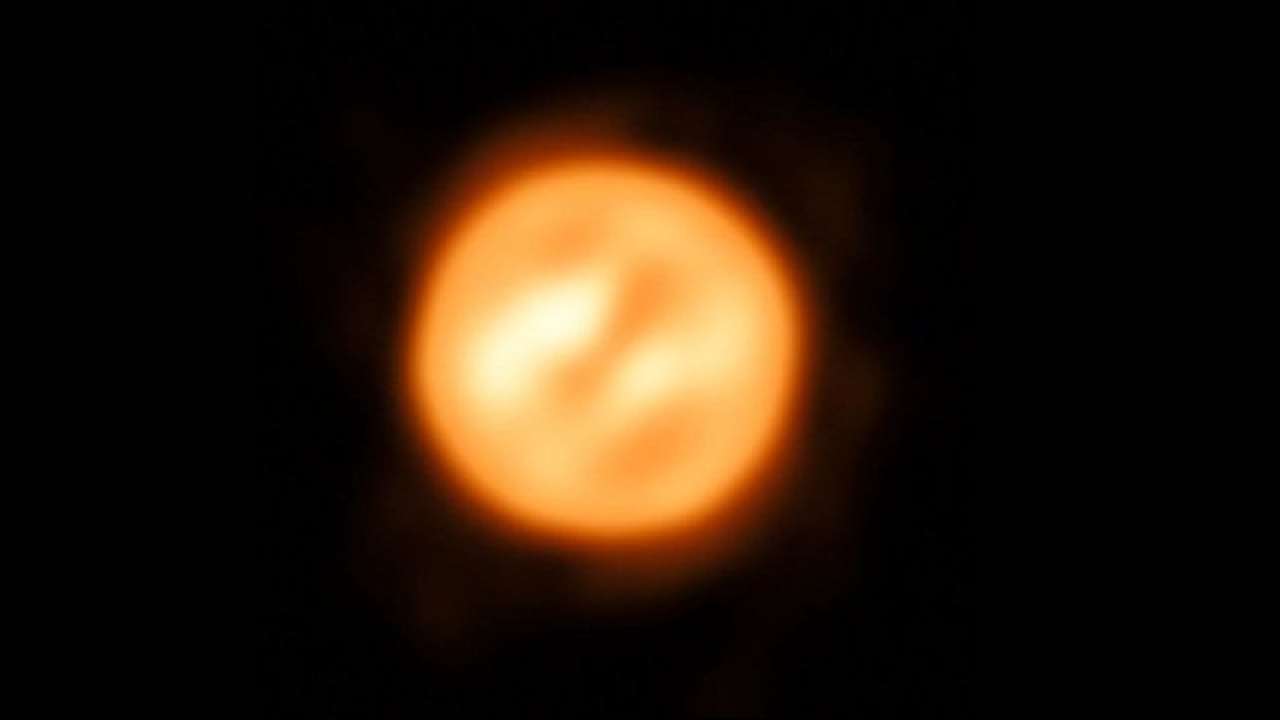Play all audios:
Astronomers have captured the most detailed image ever of the surface and atmosphere of any star other than the Sun. Astronomers have captured the most detailed image ever of the surface and
atmosphere of any star other than the Sun. They have also made the first two-dimensional map of the velocities of material in the atmosphere of a star beyond the Sun, revealing unexpected
turbulence in the red supergiant star Antares's huge extended atmosphere. To the unaided eye the famous, bright star Antares shines with a strong red tint in the heart of the
constellation of Scorpius (The Scorpion). It is a huge and comparatively cool red supergiant star in the late stages of its life, on the way to becoming a supernova. A team of astronomers,
led by Keiichi Ohnaka, of the Universidad Catolica del Norte in Chile, has now used European Southern Observatory (ESO)'s Very Large Telescope Interferometer (VLTI) in Chile to map
Antares's surface and to measure the motions of the surface material. IMAGE SOURCE: ESO/K. OHNAKA This is the best image of the surface and atmosphere of any star other than the Sun,
researchers said. "How stars like Antares lose mass so quickly in the final phase of their evolution has been a problem for over half a century," said Keiichi Ohnaka, the lead
author of the research paper published in the journal Nature. "The VLTI is the only facility that can directly measure the gas motions in the extended atmosphere of Antares - a crucial
step towards clarifying this problem," said Ohnaka. Using the new results the team has created the first two-dimensional velocity map of the atmosphere of a star other than the Sun.
They did this using the VLTI with three of the Auxiliary Telescopes and an instrument called AMBER to make separate images of the surface of Antares over a small range of infrared
wavelengths. The team then used these data to calculate the difference between the speed of the atmospheric gas at different positions on the star and the average speed over the entire star.
This resulted in a map of the relative speed of the atmospheric gas across the entire disc of Antares. The astronomers found turbulent, low-density gas much further from the star than
predicted, and concluded that the movement could not result from convection, that is, from large-scale movement of matter which transfers energy from the core to the outer atmosphere of many
stars. They said that a new, currently unknown, process may be needed to explain these movements in the extended atmospheres of red supergiants like Antares. "In the future, this
observing technique can be applied to different types of stars to study their surfaces and atmospheres in unprecedented detail. This has been limited to just the Sun up to now," Ohnaka
said.

